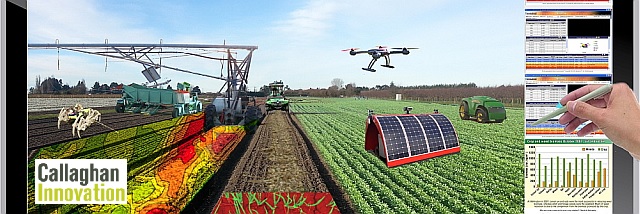LandWISE 2015 Presenter – Cheryl McCarthy
 Cheryl McCarthy is a researcher at the National Centre for Engineering in Agriculture, University of Southern Queensland based in Toowoomba.
Cheryl McCarthy is a researcher at the National Centre for Engineering in Agriculture, University of Southern Queensland based in Toowoomba.
As inputs costs continue to rise, on-farm productivity gains will come from greater sophistication in managing inputs like labour, water, chemicals and energy. Robotics is enabling the development of farming equipment and systems that can precisely sense and control to manage inputs and save labour.
NCEA is conducting a range of research projects that integrate autonomous sensing and control with on-farm operations, to robotically manage inputs within a crop. Major projects are being conducted in on-farm automation for weed spot spraying, adaptive control for irrigation optimisation, and remote crop surveillance using cameras and remotely piloted aircraft.
Cheryl is developing machine vision and sensing systems for agriculture. Machine vision-based weed detection systems have been developed for the sugar, cotton and pyrethrum industries. A Depth and Colour Segmentation process enables weed detection and a new processing technique enables the vision systems to operate at commercial ground speeds of 10-15 km/h.
Optimal irrigation strategies for overhead and surface irrigation systems are being investigated in projects for the cotton and horticultural industries. Trials in the cotton industry at sites on the Darling Downs and Central Queensland have demonstrated 10-30% water savings with 10% increase in yield, as well as labour savings, when using adaptive and automated irrigation systems which combine soil and crop monitoring sensors and variable rate applicators, together with software to calculate optimal irrigation amount.
Insufficient sampling for diseases or pests in crops and pastures can lead to misdiagnosis of the presence or level of infestation in a field, or uniform application of pesticide in a field where infestation is not distributed uniformly. Similarly, field conditions, including crop growth, water stress and weed coverage, vary spatially and require frequent monitoring to optimise management.
NCEA is developing technology that will couple rapid, field-scale data collection from RPAS with automated data and image analysis to automatically diagnose unhealthy areas of crop (see below).
























